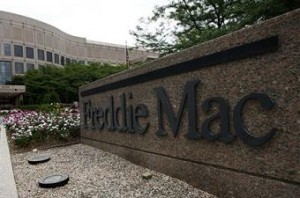 The FHFA’s conservatorship of Fannie Mae and Freddie Mac remains a controversial topic and the ability of the GSEs to remain profitable has been questioned by lawmakers and other stakeholders. But on Thursday, Freddie Mac answered the question—at least for now—by reporting a net income of $6.4 billion for the full-year 2015 in the Enterprise’s Q4 and full-year 2015 Earnings Report released Thursday.
The FHFA’s conservatorship of Fannie Mae and Freddie Mac remains a controversial topic and the ability of the GSEs to remain profitable has been questioned by lawmakers and other stakeholders. But on Thursday, Freddie Mac answered the question—at least for now—by reporting a net income of $6.4 billion for the full-year 2015 in the Enterprise’s Q4 and full-year 2015 Earnings Report released Thursday.
Though 2015’s net income was down 17 percent from the previous year’s net income of $7.7 billion, 2015 was still Freddie Mac’s fourth consecutive year of profitability. Freddie Mac’s net income for the fourth quarter of 2015 was $2.2 billion, rebounding in a big way after reporting a $475 million loss for Q3.
“2015 marked another year of solid financial performance for Freddie Mac—our fourth straight year of profitability, although we did experience significant quarterly market-related earnings volatility,” CEO Donald Layton said. “Our performance was driven by our progress in building a better Freddie Mac, as evidenced by continued growth in purchase volumes in the guarantee businesses, including a multifamily record for the company. We’re also building a better housing finance system by expanding credit risk transfer and efficiently disposing of legacy assets, and so reducing taxpayer exposure to mortgage risk.”
Freddie Mac’s net interest income for 2015 was $14.9 billion, a 5 percent increase from the previous year, despite mandated reduction in the GSE’s mortgage-related investments portfolio. Freddie Mac provided $402 billion in liquidity to the mortgage market in 2015, increasing the total of liquidity provided up to $2.9 trillion since 2009 right after the conservatorship began.
“The mortgage markets have strong momentum going into 2016, and we continue to focus on serving our customers better and fulfilling our mission to support the housing needs of owners and renters nationwide, including responsibly expanding access to mortgage credit,” Layton said.
While concerns remain that the GSEs will eventually need another taxpayer-funded bailout from Treasury, Freddie Mac returned $5.5 billion in dividend payments to Treasury in 2015. Though the yearly dividend payment to Treasury has declined from $47.6 billion in 2013 down to $19.6 billion in 2014 and down to $5.5 billion in 2015, Freddie Mac has now returned $98.2 billion in dividend payments to Treasury, which is nearly $27 billion more than the $71.3 billion bailout it received in 2008. The amount paid to Treasury includes the Q1 2016 obligation of $1.7 billion.
In 2015, Freddie Mac transferred a portion of credit risk on approximately $180 billion in mortgages, about $30 billion more than in 2014. The Legacy Asset portfolio declined to 16 percent of credit guarantee portfolio in 2015, compared to 20 percent in 2014. The serious delinquency rate on loans backed by Freddie Mac fell to 1.32 percent as of the end of 2015, down from 1.88 percent at the end of the previous year. Freddie Mac also completed non-performing loans sales with an aggregate unpaid principal balance (UPB) of approximately $2.9 billion after completing sales of loans with slightly more than a half billion dollars in UPB the previous year.
Click here to view the full earnings report.

 DSNews The homepage of the servicing industry
DSNews The homepage of the servicing industry










